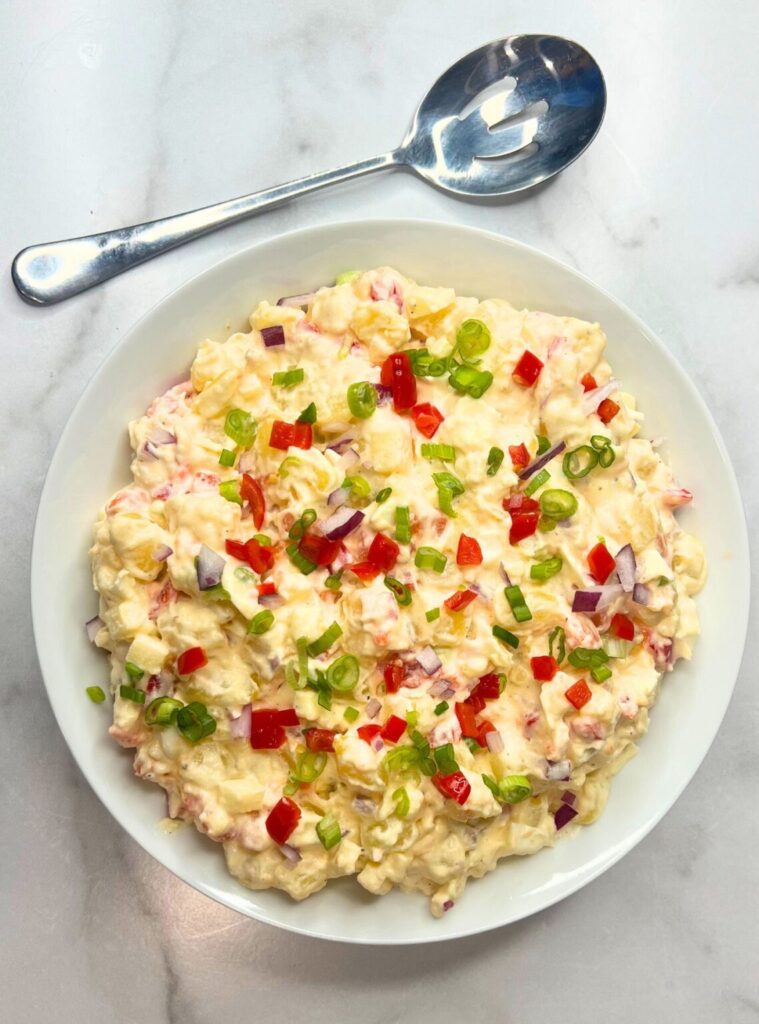
Puerto Rican Potato Salad, also known as Ensalada de Papa, is a delightful side dish that’s popular at celebrations, parties, and holiday dinners in Puerto Rico. It features boiled potatoes, hard-boiled eggs, sweet bell pepper, red onion, manzanilla olives, and roasted red peppers. The dressing combines apple cider vinegar, adobo seasoning, paprika, pepper, garlic powder, oregano, and mustard, all mixed with mayonnaise. It is served chilled alongside rice, meat, or any dish for an authentic Puerto Rican experience! 😊🌟 .
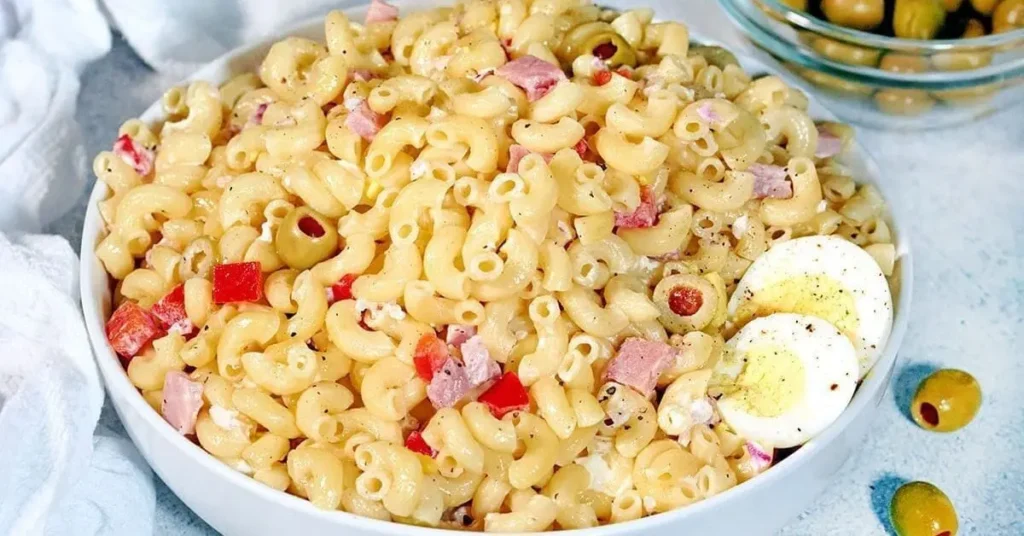
Puerto Rican Macaroni Salad, also known as Ensalada de Coditos, is a delightful side dish that combines tender elbow macaroni with a tangy mayo dressing. It often features savory additions like canned tuna, green olives, red onion, and celery. The result is a harmonious blend of textures and flavors—perfect for picnics, potlucks, or a quick lunch or as a side to any entrée!
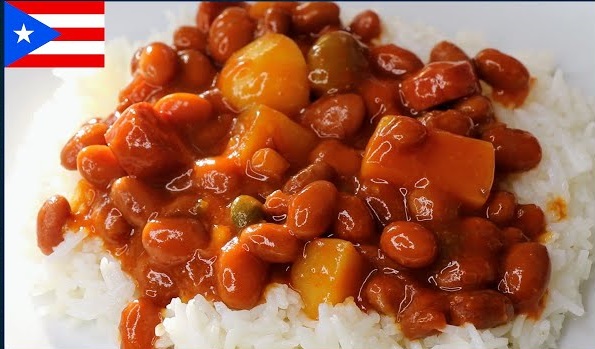
Puerto Rican habichuelas, also known as habichuelas guisadas, are a beloved dish in Puerto Rican cuisine. These are savory stewed beans cooked with a flavorful blend of ingredients like sofrito (a mix of aromatic ingredients), tomatoes, and various spices. The beans are simmered until they reach a thick, hearty consistency and are typically served over a bed of warm rice. This dish is a staple in Puerto Rican households and is often enjoyed as a comforting, everyday meal or as a side to any dish.
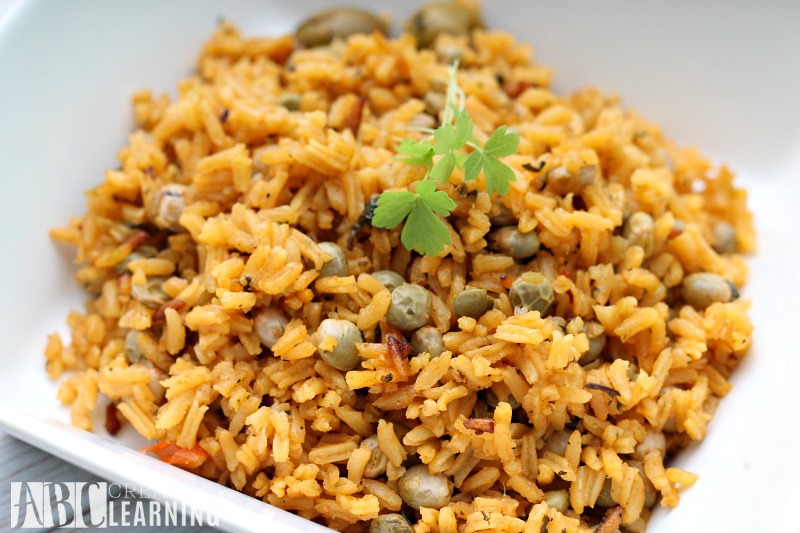
Arroz con gandules is a quintessential Puerto Rican dish, often considered the national dish of Puerto Rico! A combination of rice and pigeon peas, cooked together with a variety of seasonings and ingredients to create a savory and aromatic meal. It is made using sofrito, the base of the dish, made from a blend of onions, garlic, bell peppers, cilantro, and sometimes tomatoes. It’s sautéed in oil to release its flavors. Gandules (Pigeon Peas): These small, oval beans have a slightly nutty flavor and are a staple in Puerto Rican cuisine. Rice, medium-grain white rice is typically used, and it’s cooked to a fluffy texture. Common seasonings include sazon, adobo, cumin, and bay leaves. Some recipes also include tomato sauce for added richness. Green olives are often added for a briny contrast. Chunks of meat like pork or ham is added for additional depth of flavor. The dish is cooked in a single pot, allowing the flavors to meld together beautifully.
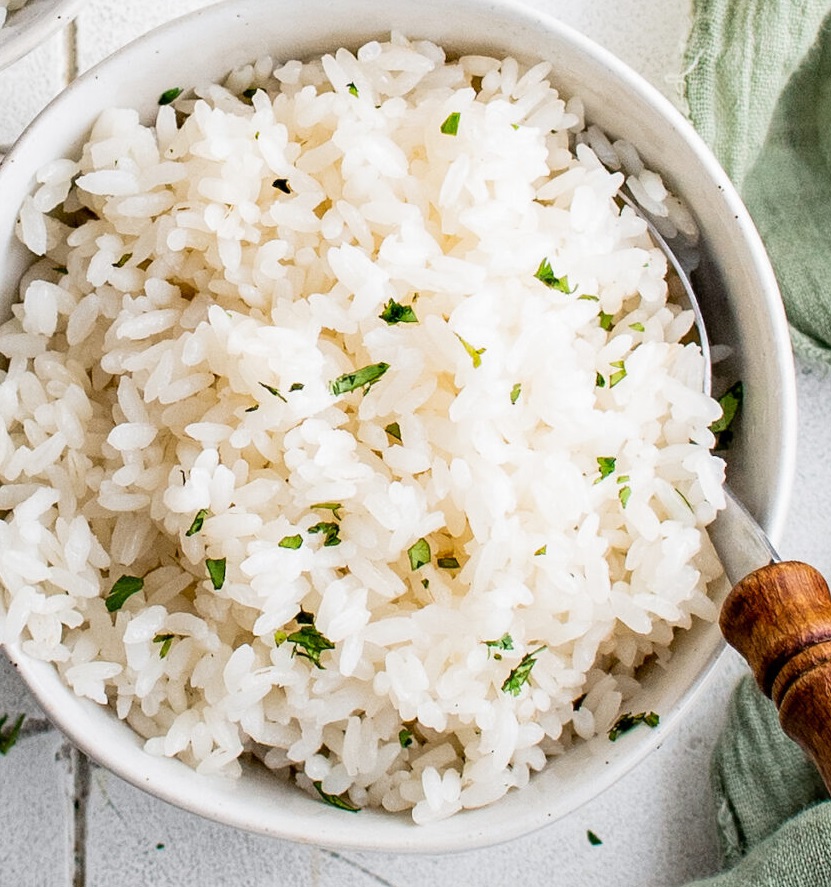
Arroz blanco is a staple in Puerto Rican cuisine. It’s a simple yet essential dish that pairs well with a variety of meals. The rice is typically cooked in a caldero (a cast-aluminum cauldron) or a heavy-bottomed pot. The result is fluffy, perfectly cooked white rice with each grain distinct and separate. Arroz blanco is often served with stews, beans, meats, and even seafood. It’s a comforting and versatile dish that’s cherished in Puerto Rican households.
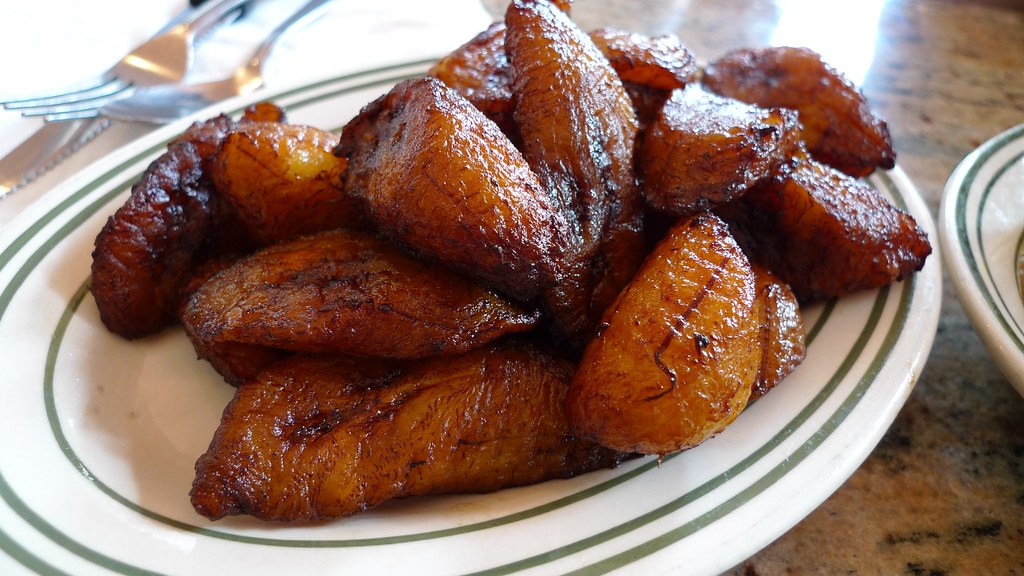
Plátanos maduros, are a popular dish made from ripe plantains. These plantains are fried until they become golden brown, tender, and deliciously sweet. The natural sweetness of the ripe plantains is enhanced through the frying process, resulting in a caramelized richness wit subtle savory notes and crispy edges. Maduros are typically served as a side dish, snack, or even dessert. They pair well with various dishes like arroz con gandules, bistec, and habichuelas.
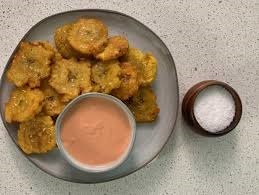
Tostones are a traditional Puerto Rican dish made from green plantains. Unlike maduros, which use ripe plantains, tostones are made with unripe, hard, very green plantains. The green plantains are peeled and sliced into thick pieces, the slices are fried until they become golden and slightly tender. The fried slices are then smashed or flattened and the flattened pieces are fried again until they become crispy and golden brown. The result is a deliciously crispy and savory snack or side dish. They are often sprinkled with sea salt and served with mayo-ketchup or mojo de ajo sauce.

Puerto Rican chicharrones de cerdo (When available) are a delicious and popular dish made from fried pork belly or pork rinds. The pork belly or pork skin is cleaned and cut into small pieces. The pieces are seasoned with a mix of spices, including garlic, salt, and pepper. The seasoned pork is then fried in its own fat until it becomes crispy and golden brown. The result is a crunchy, savory snack that is often enjoyed on its own or with sides like tostones, rice or beans.